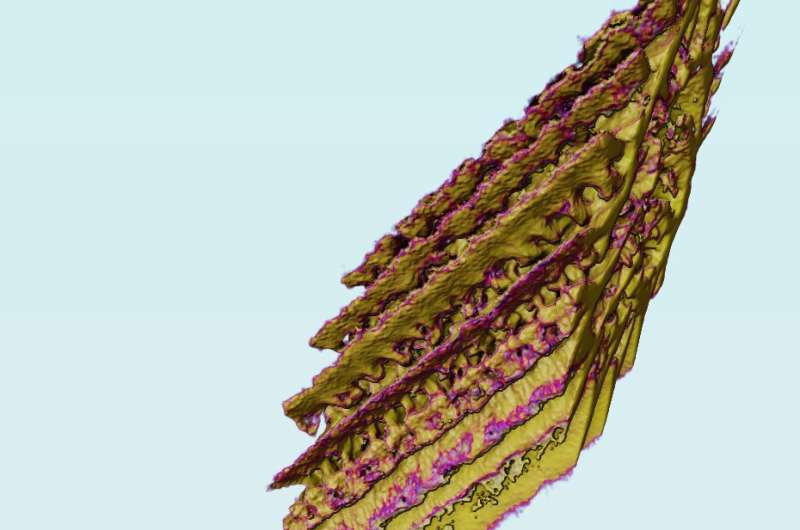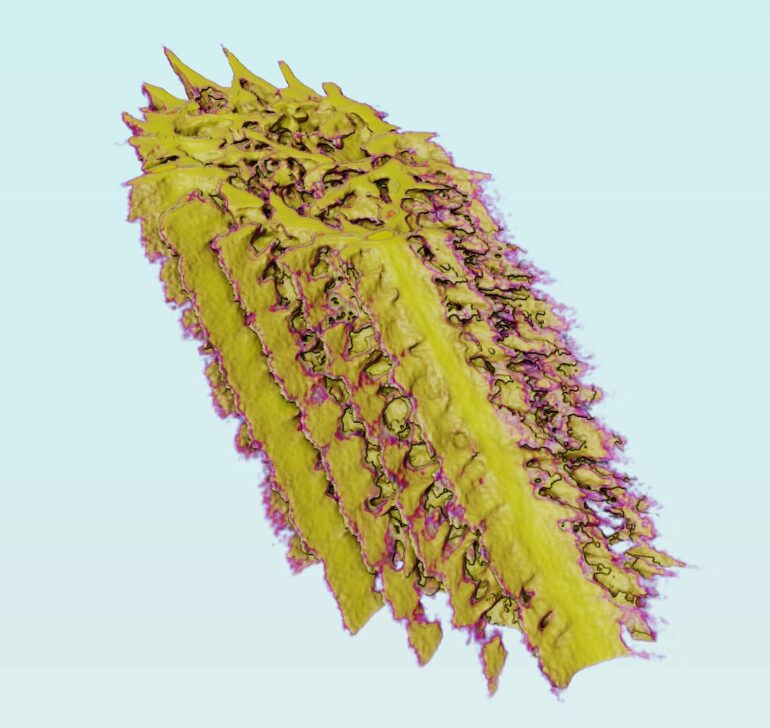Researchers from University of Bristol and Diamond Light Source have uncovered how moths create a powerful stealth cloak preventing detection by biosonar. This work (Bio-Inspired Urban Adaptations: What Insects Can Teach Us About Dealing with Noise) was led by Professor Marc Holderied, Professor of Sensory Biology, a sensory ecologist and bio-acoustician.
He has dedicated over 20 years to studying bats and their extraordinary ability to navigate and catch prey using echolocation. Drawing lessons from an anti-echolocation stealth cloak he discovered in the insect world he has now embarked on a mission to develop bio-inspired sound absorbers to help make the world quieter and healthier.
By harnessing the ingenious properties of moth wings, a sound absorber can be created that offers high absorption with minimal space requirements. The goal is to improve living conditions as such moth-inspired sound absorbers can be 90% thinner and lighter than existing solutions, bringing exotic materials like sound absorbing wallpaper in reach.
Professor Holderied explains, “The evolution of bat echolocation and how other organisms respond to it has been the focus of my work. I and my team study how organisms have evolved echoes that suit their needs. Just like most flowers use color to attract their insect and bird pollinators, we found that bat-pollinated flowers broadcast the acoustic equivalent of color in their floral echoes. Currently, we are looking at how nocturnal insects without ears can rely on acoustic camouflage against bats, demonstrating the intricate acoustic arms-race between predator and prey.”
One captivating discovery from Prof Holderied’s research revolves around the remarkable adaptation of moths, particularly silk moths. These night-flying insects lack more typical defensive mechanisms like ultrasound sensitive ears, instead they rely solely on acoustic camouflage provided by their furry bodies and the thin layer of overlapping scales on their wings.
The removal of the fur or the scales makes their echoes louder. This means fur and scales absorb the sounds used by bats creating a powerful stealth cloak against detection by biosonar and a fascinating acoustic defense.
“Additionally,” says Prof Holderied, “We discovered the thin layer of overlapping scales on their wings also acts as an acoustic metamaterial —the only one known to occur in nature- with exceptional sound-dampening properties. This discovery holds tremendous potential for replicating this exceptional natural sound absorber in noise control applications that can profit all of us.”
Recognizing the significant impact of noise on human health, especially in urban environments, Professor Holderied’s Enterprise Fellowship project aims to develop a commercial solution for bio-inspired noise control. Urban noise stands as the second-largest environmental health risk, causing substantial negative health effects and incurring substantial costs.
The imaging of moth wings at Diamond Light Source, the UK’s national synchrotron, played a crucial role in uncovering the micro-and nano structure of this natural acoustic metamaterial which creates its emergent acoustic properties.
Prof. Christoph Rau, Principal Beamline Scientist at Diamond adds, “We recently spearheaded ptychographic imaging to reveal how nano-porosity further boosts the acoustic performance of moth wings. The three-dimensional study of moths on different levels of detail plays a crucial role, providing an understanding for the relation between structure and their acoustic properties. The sound absorbing properties of thoracic moth scales are capable of absorbing about two thirds of the sound energy emitted by their predator, the bat, and increases significantly the insect’s survivability.”

Example of ptychography reconstruction of architecture of moth wings at Diamond Light Source. © Diamond Light Source
For this study the I13-2 Diamond-Manchester branch was used, where with in-line phase contrast tomography the minute details of the structures were explored, providing key data for the acoustic simulations. This work is currently being expanded to investigate the acoustic-structural properties of the wings.
The architecture of the wings is extremely fine so a resolution on the nano-length scale is required, linking the wing design to the sound absorbing capability. The second branch at the beamline I13, the I13-1 coherence branch provides imaging capabilities at the highest spatial resolution. With a method called ptychography, the pattern of the scattered X-ray light waves is reconstructed and is not constrained by the resolution of detectors or X-ray optics.

Example of ptychography reconstruction of architecture of moth wings at Diamond Light Source. © Diamond Light Source
This provides an unprecedented high-resolution imaging capability, necessary for the simulation of the acoustic simulations in the following. Senior Support Scientist, Kudakwashe Jakata who recently joined the I13 team, performing the data acquisition and analyses states: “The high-resolution data is really impressive for its quality.”
Overall the multi-scale capabilities of the I13 Beamline for Imaging and Coherence provide a holistic approach to identify and understand the different sound absorbing structures, protecting moths from their predators.

Example of ptychography reconstruction of architecture of moth wings at Diamond Light Source. © Diamond Light Source
Beyond noise control, Professor Holderied emphasizes the crucial role of biodiversity and the need to defend every organism sharing our habitat. Insects, including moths, are an integral part of ecosystems, contributing to stability and carrying ingenious adaptations. The loss of biodiversity diminishes our chances of discovering and learning from nature’s remarkable inventions. By fostering awareness and appreciation for the diversity of life, we can ensure a harmonious coexistence with the natural world.
Prof Holderied’s work in bio-inspired sound absorbers showcases the immense potential of nature’s adaptations in solving complex health challenges. He believes that by embracing nature’s teachings, we can unlock a wealth of solutions for a more sustainable and harmonious world.
Provided by
Diamond Light Source
Citation:
How moths create invisibility cloaks preventing detection by predators using biosonar (2023, June 22)


